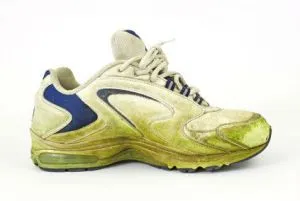Running, either sprints or long-distance endurance treks, is a great form of aerobic exercise with many boons to your heart health. However, your choice of shoes is crucial to this activity, as ill-fitting or worn out shoes can actually lead to an injury.
If you continue running in shoes that have started to break down, it can put a lot of pressure on your joints, as the shock of the impact of your feet against the running surface is no longer being absorbed by the shoe. It can also make you unstable as you run. Failing to replace your shoes in time can lead to knee, ankle, leg, hip and back damage.
You will know it’s time to go shoe-shopping when any of the following scenarios describe your running shoes:
1. They are causing you pain while you run
This can be a bit tricky to determine, as some people attribute pain while running to the physical exertion of the activity itself, and not to the shoe. However, if you are feeling shin splints, aching knees (especially on both sides), joint pain, or muscle fatigue that is more intense than normal, it’s likely time to replace your shoes.
2. They don’t survive the ‘twist test’
Hold one of your shoes in both hands, with one hand at each end, and twist the shoe. If it is still intact, it will feel firm, and will not twist easily. A worn-out shoe will have a lot of ‘give,’ and be easily twistable.
3. They lack cushioning
If the cushions lining the inside of your shoes have worn down, and you feel like there isn’t much between your feet and the pavement when you run (i.e. it seems like your heels are slamming directly against the road), your shoes have reached the end of their lifespan.
4. They’ve lost their sole
If the treads on the bottom of your shoes are no more, and especially if the sole is worn, it’s time to say goodbye to the shoes. This is actually a sign that the shoes should have been replaced long ago, because when they reach this point, they have long been lacking in shock absorbency.
5. They’ve reached their expiration date
Running shoes should be replaced when they have taken you between about 300 and 400 miles, depending on how you run. If you run on a treadmill, or on an even track, your shoes will last a bit longer. If you are a heavy runner, or run on hilly trails or rough terrains, your shoes will need to be replaced more frequently.
A common suggestion by experts and seasoned runners alike is to keep two pairs of running shoes, and alternate between them. This will save you from having to go to the shoe store as often, and will also add a bit of variety to your runs.

-The Alternative Daily
Sources:
http://running.about.com/od/runningshoereviews/tp/replacerunningshoes.htm
http://www.healthytippingpoint.com/2013/02/when-do-you-need-new-running-shoes.html
